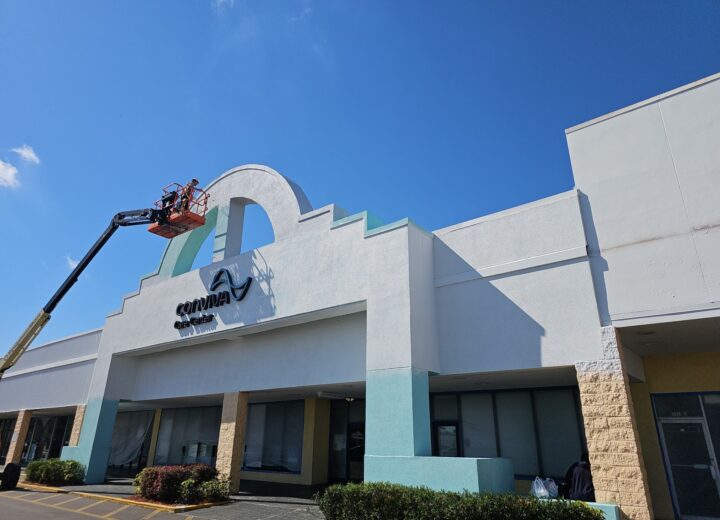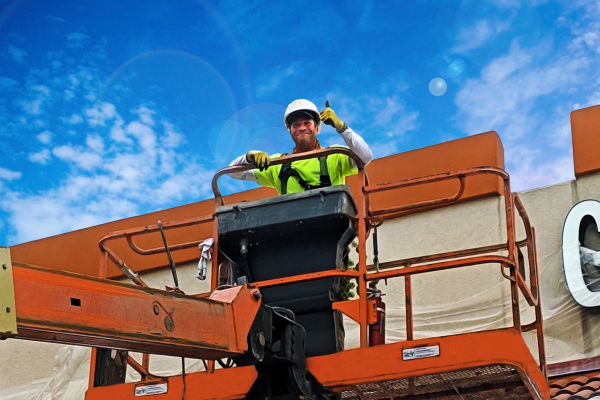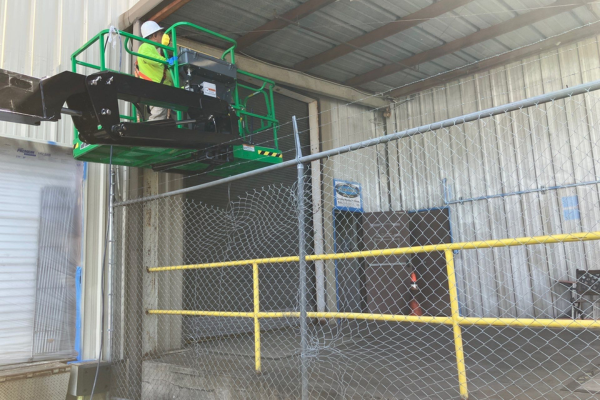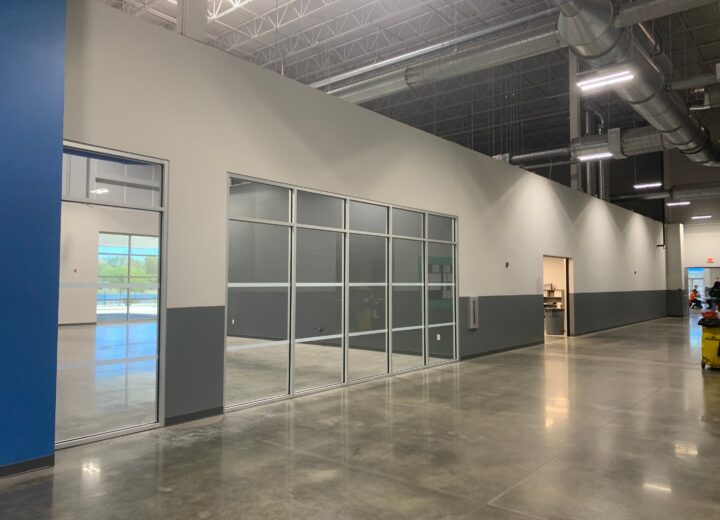Surface preparation is one of the most important factors affecting the quality, performance, and service life of a paint job. To achieve optimum results, surfaces must be completely free of dust, dirt, and grease, and prepared correctly to ensure good coating adhesion to the substrate. Two common surface preparation methods used by industrial painters today are waterblasting and sandblasting.
Waterblasting
Waterblasting provides an efficient, economic, safe, and eco-friendly way to clean and maintain different surfaces. Read on for the most important benefits.
- Waterblasting allows you to clean and prepare a wide variety of exterior painted surfaces without chemicals and without the risk of releasing unsafe contaminants into the air.
- Unlike chemical-based cleaning, waterblasting leaves no residue behind, which means that no rinsing is required.
- Waterblasting equipment allows users to adjust the pressure and switch between different fan nozzles, according to each job. For instance, you can easily reduce the pressure to wash away dust, cobwebs, and contaminants, and increase it to remove adhesive and multi-layered coating systems, expose and clean out cracks so that appropriate repairs can be made, and open surface pores to deliver suitable profiles for the application of new protective coating systems.
- Waterblasting leaves surfaces clean, chemical free, and ready for re-use (after they dry out completely).
Since improper technique or incorrect handling of waterblasting equipment may cause localized damage and excessive erosion of surfaces, you should read our 10 Step Guide to Pressure Washing-The Right Way before attempting to use a waterblasting machine.
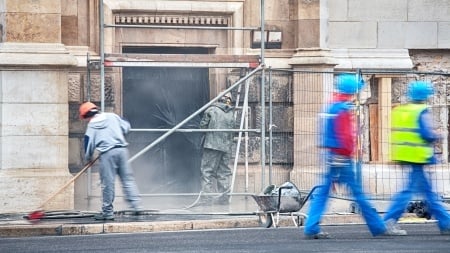
Sandblasting
Though sandblasting is one of the most common surface preparation methods for metal, it can be successfully and safely used to remove dust, dirt, and old paint from different surfaces.
There are two sandblasting methods: 1) Wet sandblasting, which implies the use of a high-powered stream of water mixed with sand or other abrasive material; 2) Dry sandblasting, which involves the use of highly pressurized air in conjunction with abrasives. Both methods deliver the following benefits:
- Compared to water blasting, sandblasting provides a better, easier, and faster way to clean and prepare different surfaces for painting.
- The degree of sandblasting can be adjusted to perform a wide variety of operations, from light cleaning, such as removing dust, dirt, grit, rust and old paint, to deep cutting, including shaping, roughening, and smoothing surfaces.
- Sandblasting is more powerful than sandpapering, allowing professionals to prepare surfaces in hours instead of days.
Sometimes, pressure washing or steam cleaning must be used in conjunction with sandblasting to prepare metal for painting. Additionally, dry sandblasting is more dangerous than wet sandblasting, as it may create potentially hazardous dust clouds. In some parts of Florida (e.g. Miami, Miami Beach, and Coral Gables) the projects involving sandblasting require special permission from the city/county.
Different painting projects imply various circumstances and special requirements. Therefore, it’s important to check project specifications along with the condition of the substrate, technical data sheets, and application techniques before choosing one blasting technique over the other. When in doubt, expert advice should be sought from professionals.
Are you looking for the best way to prepare surfaces for painting? At Performance Painting, we’ve successfully completed dozens of industrial projects including water and sandblasting. Contact us today at (904)-641-4800, and our experienced operators will help you choose the right surface preparation technique and coating system for your painting project.

